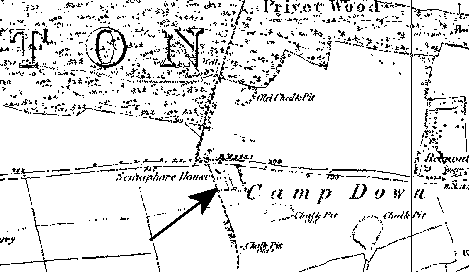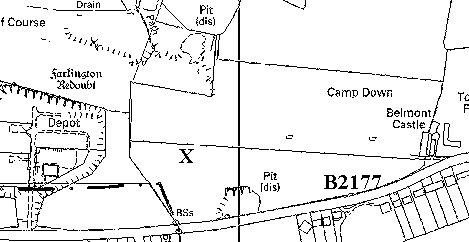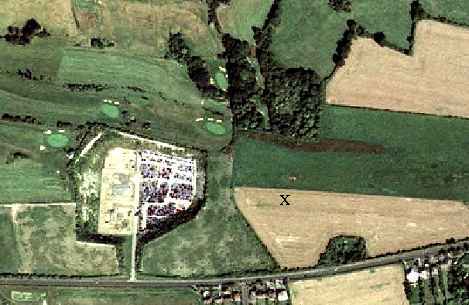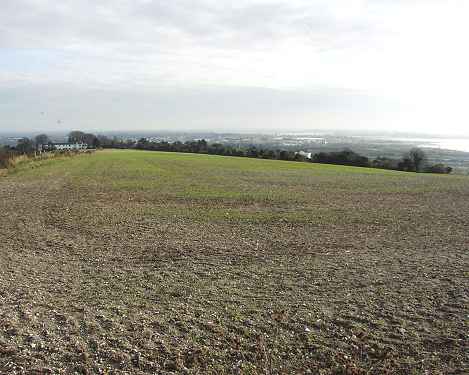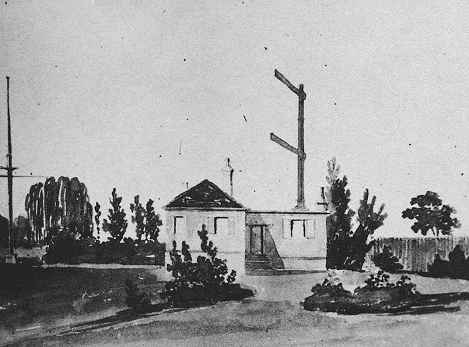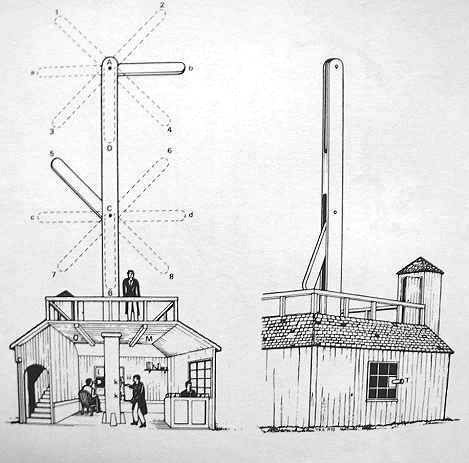|
On 29 June 1815 and act
of Parliament was passed enabling the Government to
acquire land for the new Semaphore Telegraph Stations. These
were to be a permanent replacement for the Shutter Telegraph described
on the previous page.
From March 1816 when the
Shutter Line was closed until the end of June 1822 when the
Semaphore opened, Portsmouth was without a telegraph
communication. In most cases the location of the new Semaphore
stations were not the same as those of the old Shutter stations.
There were various designs submitted for the new Semaphore Telegraph, but the Admiralty chose a design by Rear-Admiral Sir Home Riggs
Popham. His idea was to use two signalling arms, instead of the three used by the French, at different heights on a mast 30 feet high. By July 1816 an experimental line had been constructed between the Admiralty and Chatham and was in working order. The Semaphores were made by Messrs Maudslay and the telescopes were supplied by
Dollond.
On 19 February 1818 Mr Thomas Goddard, a Purser from the Royal Yacht -
Royal George - was instructed to carry out a survey of the route of the old Portsmouth Shutter line with a view to working it with Popham's semaphore. After much delay in acquiring land and with building work, the stations began working at the end of June 1822. The cost of maintaining the stations was £3,000 per annum.
|
